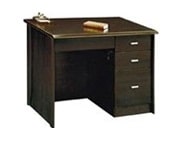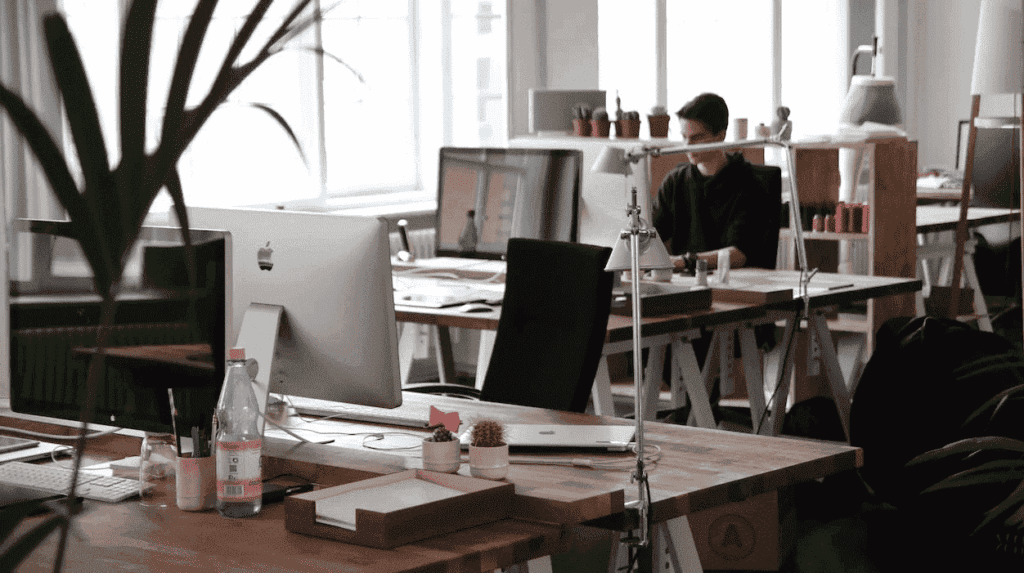Open Offices: A Surprising Breakdown of Pros and Cons
One of the most important decisions you’ll have to make when setting up your office is whether to have an open space layout or installing modular units or office cubicles. Both choices have pros and cons, so it’s important to think carefully about which is best for your business.
Here, we’ll discuss the advantages and disadvantages of open offices so you can decide what’s most suitable for you. In the next days we’ll tackle office cubicles.
OPEN OFFICES – The Advantages
Collaboration and Coordination
Open offices make it easier for your workers to communicate. Without those partition panels separating them, it would be easier for your employees to work on projects or solve problems together.
This type of arrangement makes it easy for managers and supervisors to monitor and manage their teams. They can easily notice if some of their group members are doing their jobs. Also, employees are easier to see and get in touch with.
The manager or supervisor can tell his staff what he wants them to do just by calling them by name. This can be especially helpful in high-stress or fast-paced work environments where it’s important to make decisions and talk to people quickly.
But here’s an update. The use of open office has been here for quite sometime now. There was study done and is now published in Harvard Business Review that those structures, meaning the open offices, “have produced less interaction.”
Cost Savings
You have less costs involve with an open office. The initial cash flow is important especially if your business is just starting out. A single office cubicle would cost between 20,000 Pesos and 25,000 Pesos. Now imagine if you have 50 people working for you. The cost savings from not having to buy or rent as much floor space is significant. With an open office, more workers can work in the same floor area.
A company would also look more modern and up-to-date with an open office plan. Most old offices with closed cubicles are seen as outdated. An open office layout can create a more relaxed and energetic workplace for creativity and new ideas.
Flexibility
Another benefit is flexibility. There are times when the way a business is run is changed. This changes the way information flows, which would directly affect where the staff is seated. Open offices could easily adjust to this. It would be easy to move the gears that belong to them, like bookstands and mobile cabinets. If another group or team comes in, you could add the needed furniture and move the tables and chairs that are already there.
Atmosphere
Now, natural light is something else. Most of the time, cubicles block light from coming in through the windows. Without anything blocking your view, open spaces make you feel like you’re at home. This would make you feel better and help you get more work done.
OPEN OFFICES – The Disadvantages
Privacy
The lack of privacy is a big problem with open offices. People would have difficulty having private conversations with their guests or coworkers. They could be talking hush or the person seated next to her could be distracted from her work. Employees can also find it annoying when their work is interrupted by the noise of their coworkers. This can lead to less work getting done.
Employees may find it hard to keep a healthy balance between work and life in an open office. Without the ability to separate work and personal life, employees may find themselves constantly on call and unable to stop thinking about work, leading to burnout and stress.
Another thing is that employees would have a hard time doing business on their own, like calling clients or bosses, if there were no walls between them.
You may not be convinced that the abovementioned things are not entirely convincing against open offices. But if your company is involved with handling confidential information, Then reconsider. If you are in the healthcare business, finance, consulting, or law, then the open office may not be suited for you.
Because there isn’t enough privacy, security can be broken, which puts the organization at risk. Imagine having a business conversation with your client about investments, court cases, or competitors. These things are very private, so you wouldn’t talk about them in openly where people could listen in.
Work Environment
The lack of control over the space is another big problem with open offices. Most office workers care a lot about air conditioning and the temperature of the office. Some people like it somewhat warm and not too cold. Some people are fine with 17°C, but most are not. If your boss likes it to be 17 degrees, then have your jacket ready.
The light is something else. Some jobs need a lot of light, while others only need a little. In an open office type, you only have centralized overhead lights. Even though you can have your own table lamp, it will just add more stuff to your already limited workspace.
Spread of Diseases
The spread of diseases is one of the most important things that businesses worry about today. The cost of health care is going up, the number of sick leaves taken by employees are going up, and the government are making rules about social distancing and other hygiene requirements stricter.
We’ll talk about the pros and cons of office cubicles in the next post. At WORKZONE, we have furniture for any kind of office, whether it’s an open or a cubicle type. Inquire at [email protected]



